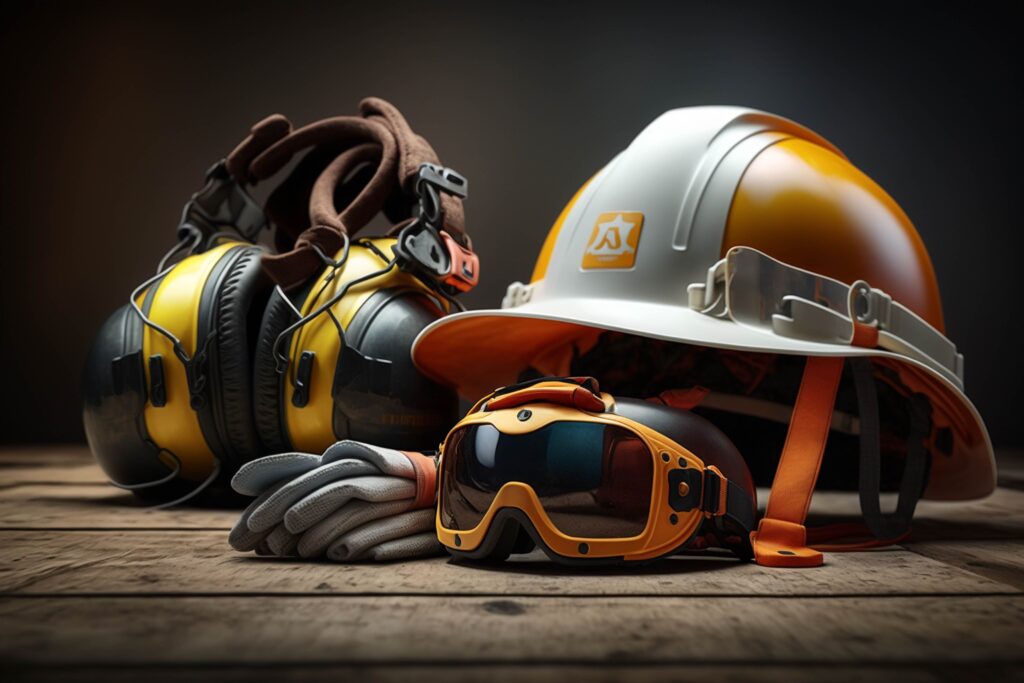Personal Protective Equipment (PPE) remains a key pillar of workplace safety. In 2025, new regulations and training standards emerged and changed how businesses approach PPE compliance training. This article outlines the OHS safety update 2025 and offers practical insights to assist with compliance and further protect workers. With clear guidelines and hands-on training, employers can reduce risks and foster safer workplaces.
Why PPE Compliance Matters
PPE indeed saves lives. The equipment shields workers from hazards like chemical spills, falling objects, and electrical shocks amongst others. In 2023, the Canadian Centre for Occupational Health and Safety (CCOHS) reported that workplaces with strict PPE protocols saw 30% fewer injuries. Non-compliance, however, leads to injuries, fines, and lost productivity.
Workplace PPE compliance guidelines demand that employers assess risks, provide appropriate PPE, and train workers. In 2025, regulators emphasize accountability. Failing to comply with the Canada Labour Code or provincial OHS laws can result in penalties up to $1 million for severe violations.
Key Updates in OHS Safety for 2025
The OHS safety update 2025 introduces stricter rules and enhanced training requirements. Here’s what businesses need to know:
- Updated PPE Standards: New CSA Group standards mandate higher-quality PPE for high-risk industries like construction and manufacturing. For example, hard hats must now meet Z94.1-25 impact resistance criteria.
- Mandatory Training Audits: Employers must document the PPE training sessions delivered to their workers. Regulators may conduct random audits to verify compliance.
- Digital Training Tools: Virtual reality (VR) and e-learning platforms are becoming increasingly popular types of PPE compliance training. These tools simulate real-world hazards, improving retention by 40%, per a 2024 study.
- Focus on Mental Health: OHS guidelines now encourage ergonomic PPE, like lightweight respirators, to reduce physical strain and improve worker comfort.
PPE Training Requirements in Canada
Training isn’t optional but rather a legal necessity. PPE training requirements in Canada mandate that workers understand how to use, maintain, and store PPE. Employers must provide role-specific training tailored to workplace hazards.

Here’s what effective training includes:
- Hazard Identification: Teach workers to recognize risks, like chemical exposure in labs or falling debris on construction sites.
- Proper PPE Use: Demonstrate correct techniques, such as securing a harness or fitting a respirator. Incorrect use can reduce effectiveness by up to 50%.
- Maintenance and Inspection: Train workers to check PPE for wear and tear. A 2024 CCOHS report noted that 20% of PPE failures stem from poor maintenance.
- Emergency Protocols: Ensure workers know how to respond if PPE fails, like evacuating during a chemical leak.
- Training must be refreshed annually or when new equipment is introduced. In Ontario, the Occupational Health and Safety Act requires employers to maintain training records for at least three years.

Real-World Examples of PPE Saving Lives
Here are two real-world cases where PPE prevented serious injuries:
- Construction Site Fall (Alberta, 2023): A worker on a Calgary high-rise slipped from a scaffold 20 feet above ground. His full-body harness, part of mandatory PPE, caught him mid-fall. The harness, compliant with CSA Z259.10 standards, prevented a fatal injury. Proper training ensured he had put on the harness correctly.
- Chemical Plant Spill (British Columbia, 2024): A technician at a Vancouver chemical plant faced a sudden acid spill. Her PPE, including a face shield and chemical-resistant gloves, protected her from severe burns. Regular PPE compliance training 2025 ensured she knew how to recognize the risk and don appropriate PPE.
These cases show PPE’s critical role. Without it, outcomes could have been far worse with severe injuries resulting.

Practical Steps for Compliance
Employers must act proactively to meet workplace PPE compliance guidelines. Here’s how:
- Conduct Risk Assessments: Identify workplace hazards annually. For example, a warehouse may need ear protection for forklift noise. For specific tasks, a morning tailgate meeting can be implemented highlighting risks and proper PPE selection.
- Invest in Quality PPE: Choose equipment meeting or exceeding 2025 CSA standards. Cheap gear will not deliver the required protection when it matters most.
- Schedule Regular Training: Use interactive methods like VR or hands-on drills. A 2024 study found hands-on training boosts compliance by 35%.
- Engage Workers: Involve employees in PPE selection. Comfortable gear increases usage rates.
- Monitor Compliance: Assign supervisors to check PPE use daily. Correct violations immediately to avoid fines.
FAQs:
Key Takeaways
- Stay Updated: Align with the OHS safety update 2025 to meet new CSA standards and avoid penalties.
- Prioritize Training: Implement regular, hands-on PPE compliance training to ensure workers use gear correctly including wear inspection.
- Invest in Safety: High-quality PPE and proactive risk assessments save lives and reduce workplace injuries.
By embracing these updates, businesses can protect workers and thrive in 2025’s safety landscape. The bottom line remains that workers get home safely every night.








678gamelogin
Having trouble logging into 678game? Me too! That’s why I used 678gamelogin. Got me straight in. Now, where’s that winning streak at, eh?